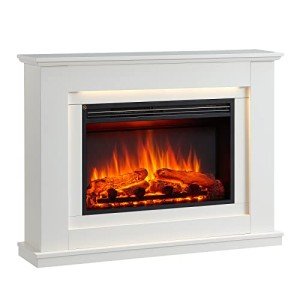Are You Responsible For A Fireplace Budget? 10 Ways To Waste Your Money

The Charm and Functionality of Fireplaces: A Comprehensive Guide
Fireplaces have long been a main function in homes, representing heat, companionship, and comfort. They come in numerous styles, materials, and fuel types, dealing with the choices and needs of diverse house owners. This post explores the diverse world of fireplaces, exploring their history, types, setup factors to consider, and maintenance ideas, while supplying FAQs to address typical queries.
A Brief History of Fireplaces
Historically, fireplaces served as the foundation for cooking and heating homes. In ancient times, an open hearth was frequently put in the center of a residence. Over centuries, architectural improvements assisted in the advancement of more advanced styles, evolving from simple stone structures to elaborate mantels that command modern home.
Key Historical Milestones:
- Ancient Times: Open fires in caverns and primitive huts for heat and cooking.
- Middle Ages: Large, typically centralized chimney structures in fantastic halls of castles.
- Renaissance: Decorative mantels and styles gain popularity, with the fireplace ending up being a symbol of wealth and status.
- Industrial Revolution: Advancements in products and manufacturing permit for a more comprehensive range of fireplace styles.
- Modern Era: Gas and electric fireplaces become commonplace, permitting increased convenience and safety.
Kinds of Fireplaces
Today, many kinds of fireplaces are offered, each with its distinct qualities. Below is a breakdown of the most common types:
| Fireplace Type | Description | Pros | Cons |
|---|---|---|---|
| Wood-Burning | Traditional fireplaces sustained by wood. | Authentic experience, heat output. | Labor-intensive, requires proper venting/maintenance. |
| Gas | Fireplaces that utilize natural gas or gas. | Easy to utilize and keep. | Less atmosphere compared to wood. |
| Electric | Utilizes electricity to generate heat and flames. | Safe, no venting needed. | Limited heat output, higher energy costs. |
| Bioethanol | Utilizes bioethanol fuel, producing tidy flames. | Ecologically friendly, portable. | Needs regular refueling. |
| Pellet | Utilizes compressed wood pellets as fuel. | Tidy burning, sustainable. | Needs power for operation. |
Additional Considerations
When selecting a fireplace, it is necessary to consider elements such as:
- Fuel Availability: Consider what fuels are easily available in your location.
- Space and Aesthetics: The size of your living area and your design choices ought to assist your choice.
- Structure Regulations: Always seek advice from local regulations to ensure compliance and safety.
Setup Considerations
Setting up a fireplace includes more than simply placing a structure in your house. Buy Fireplaces , expert input, and adherence to safety codes are critical. Here are some important steps:
- Planning: Consider the size and type of fireplace, where it will be put, and its desired usage.
- Assessment: Hire a certified specialist to assess your home and make sure correct installation.
- Allows: Obtain any required structure licenses from local authorities.
- Products: Select suitable materials for the fireplace and surrounding location. Ensure view are fire-resistant and designed for your fuel type.
Maintenance Tips for Fireplaces
Routine upkeep ensures your fireplace runs securely and effectively. Here are necessary upkeep suggestions categorized by fireplace type:
Wood-Burning Fireplaces
- Chimney Cleaning: Have your chimney cleaned every year to avoid creosote buildup.
- Inspect for Damage: Check for fractures and damage to the firebox and chimney structure.
- Firewood Storage: Store firewood far from your home to avoid insect infestations.
Gas Fireplaces
- Log Inspection: Regularly examine ceramic logs for cracks and change if needed.
- Vent Cleaning: Ensure that vents are free from blockages.
- Pilot Burner Check: Test pilot lights and ignition systems regularly.
Electric Fireplaces
- Cable Inspection: Frequently examine electrical cables for tearing or use.
- Clean Surfaces: Wipe down surface areas routinely to remove dust and particles.
- Smoke Detectors: Ensure smoke alarm in the vicinity are functional.
Bioethanol and Pellet Fireplaces
- Fuel Storage: Store fuels in a cool, dry place far from direct sunlight.
- Routine Refueling: Monitor fuel levels and refuel as needed.
- Ventilation: Ensure appropriate ventilation when utilizing these fireplaces.
Frequently asked questions About Fireplaces
Q1: Do I require a permit to set up a fireplace?
Yes, many municipalities require licenses for fireplace installations to make sure security and compliance with local structure codes.
Q2: How frequently should I clean my chimney?
It is suggested to have your chimney cleaned up at least as soon as a year, specifically if you use your fireplace regularly.
Q3: Can I transform a wood-burning fireplace to gas?
Yes, many property owners convert wood-burning fireplaces to gas for convenience, however speaking with a professional is suggested to make sure an appropriate conversion.
Q4: Do electric fireplaces produce heat?
Yes, electric fireplaces can produce heat; however, their main function is typically for ambiance, making them a suitable option for those who want a fire appearance without comprehensive heating.
Q5: Are bioethanol fireplaces safe?
Bioethanol fireplaces are normally safe when used properly; nevertheless, they need proper ventilation, and users must follow all manufacturer standards.
Fireplaces not just add aesthetic interest homes however also provide practical heating options. With numerous types, styles, and maintenance requirements, house owners can make educated options that best match their needs and lifestyles. Whether selecting the appeal of a wood-burning fireplace or the benefit of a gas model, a fireplace can substantially improve a home's comfort and environment. As the hearth stays a focal point in homes, it continues to foster warmth, conversation, and connections amongst household and buddies.

